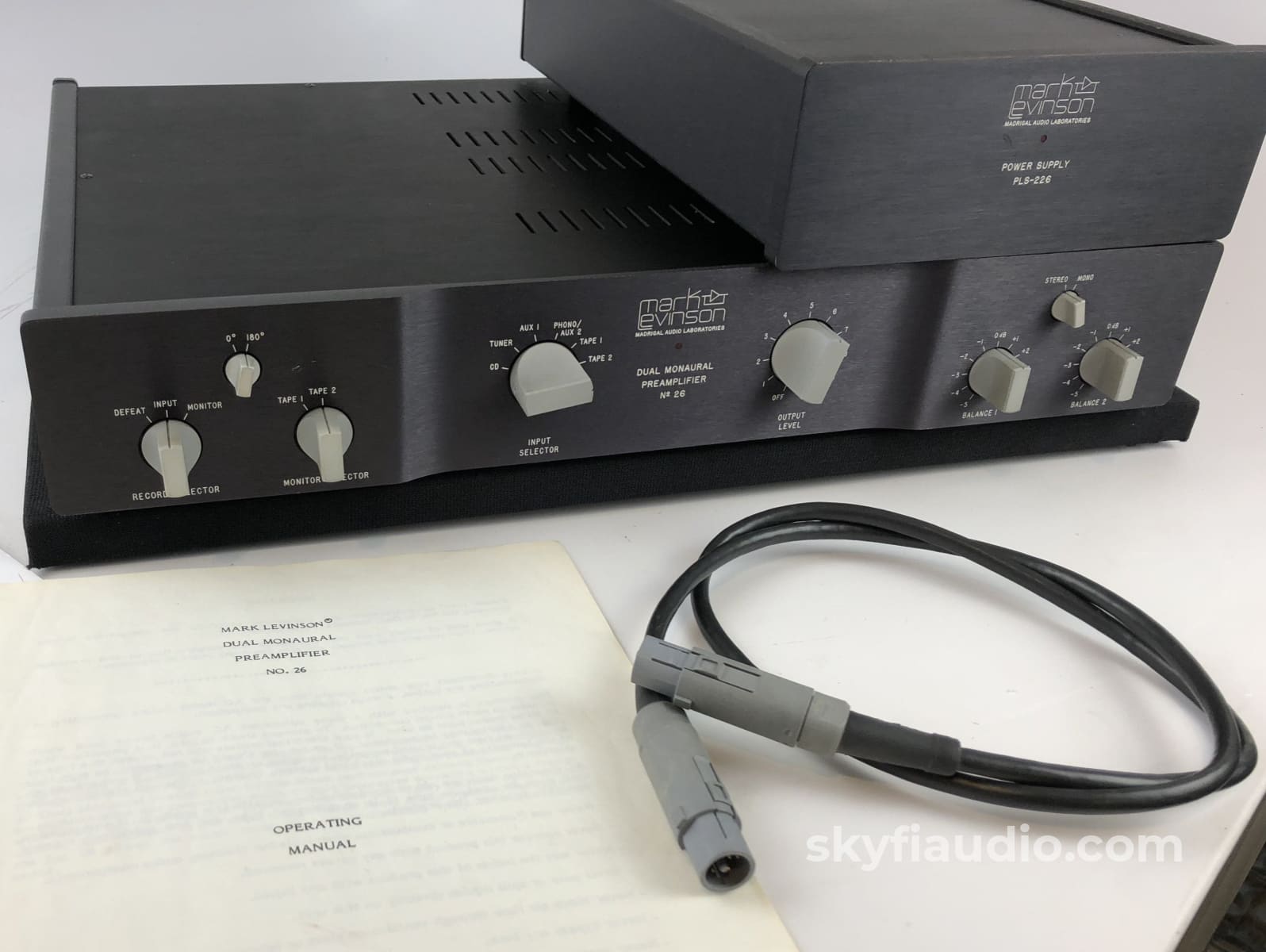
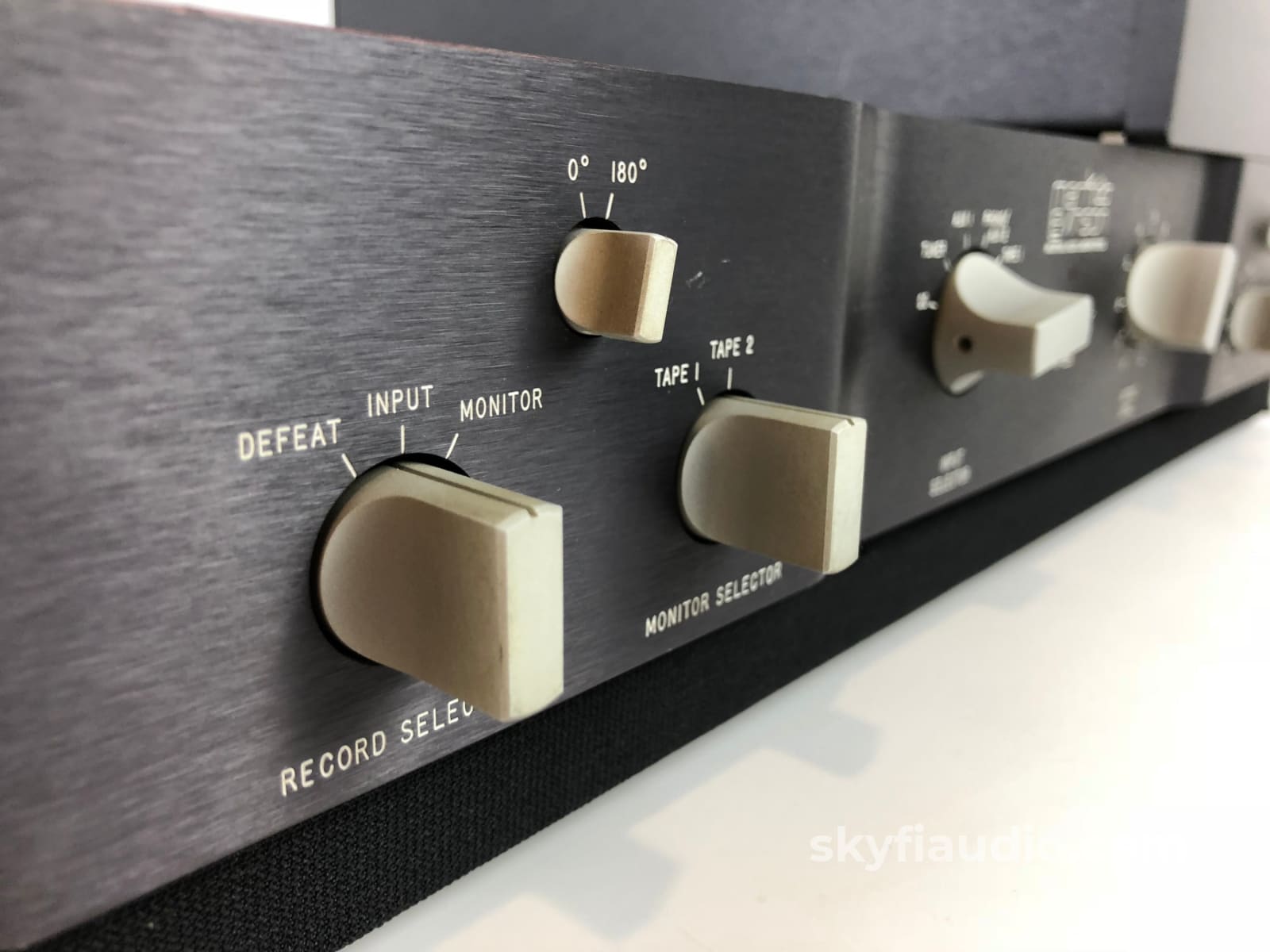
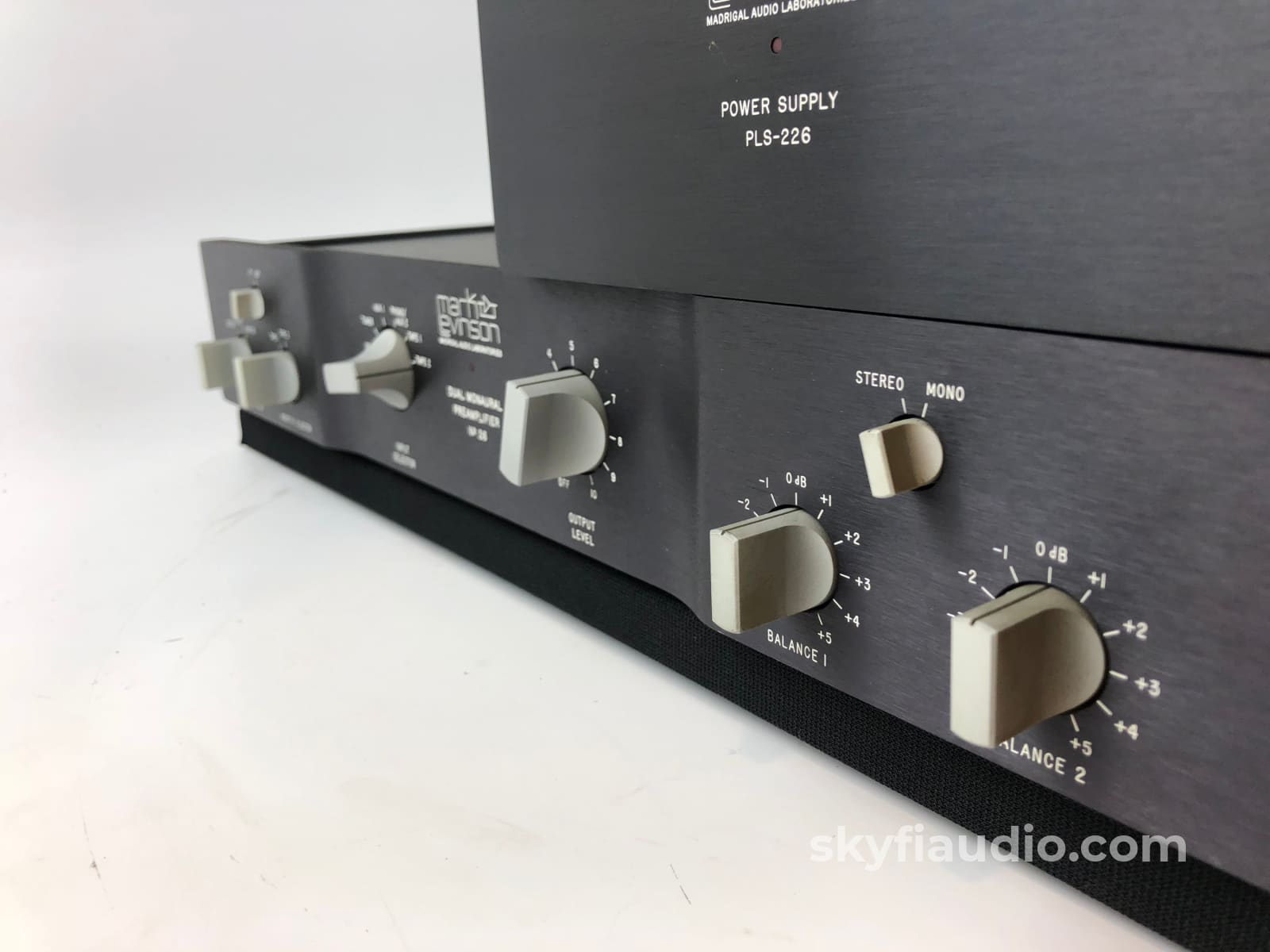
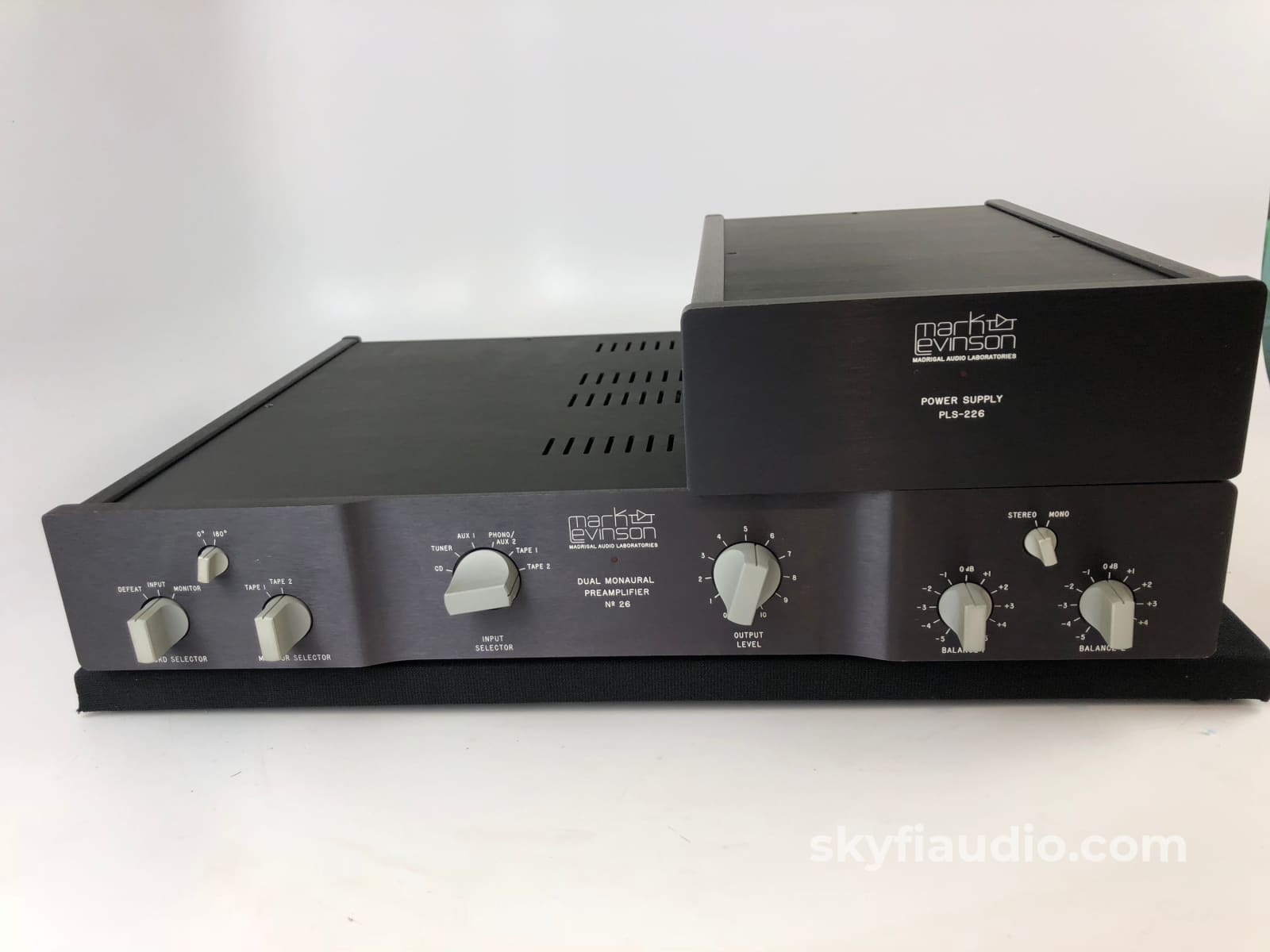
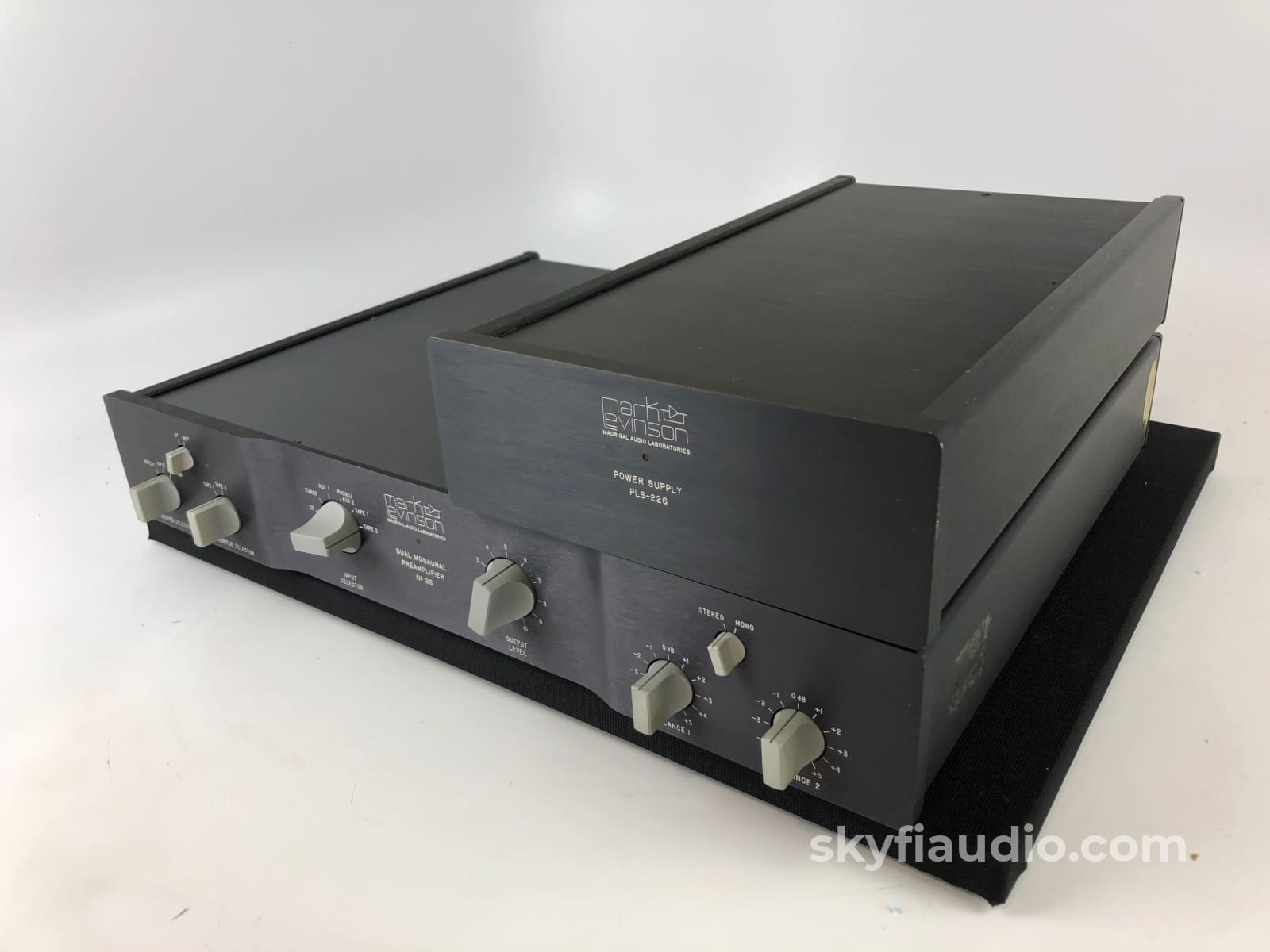
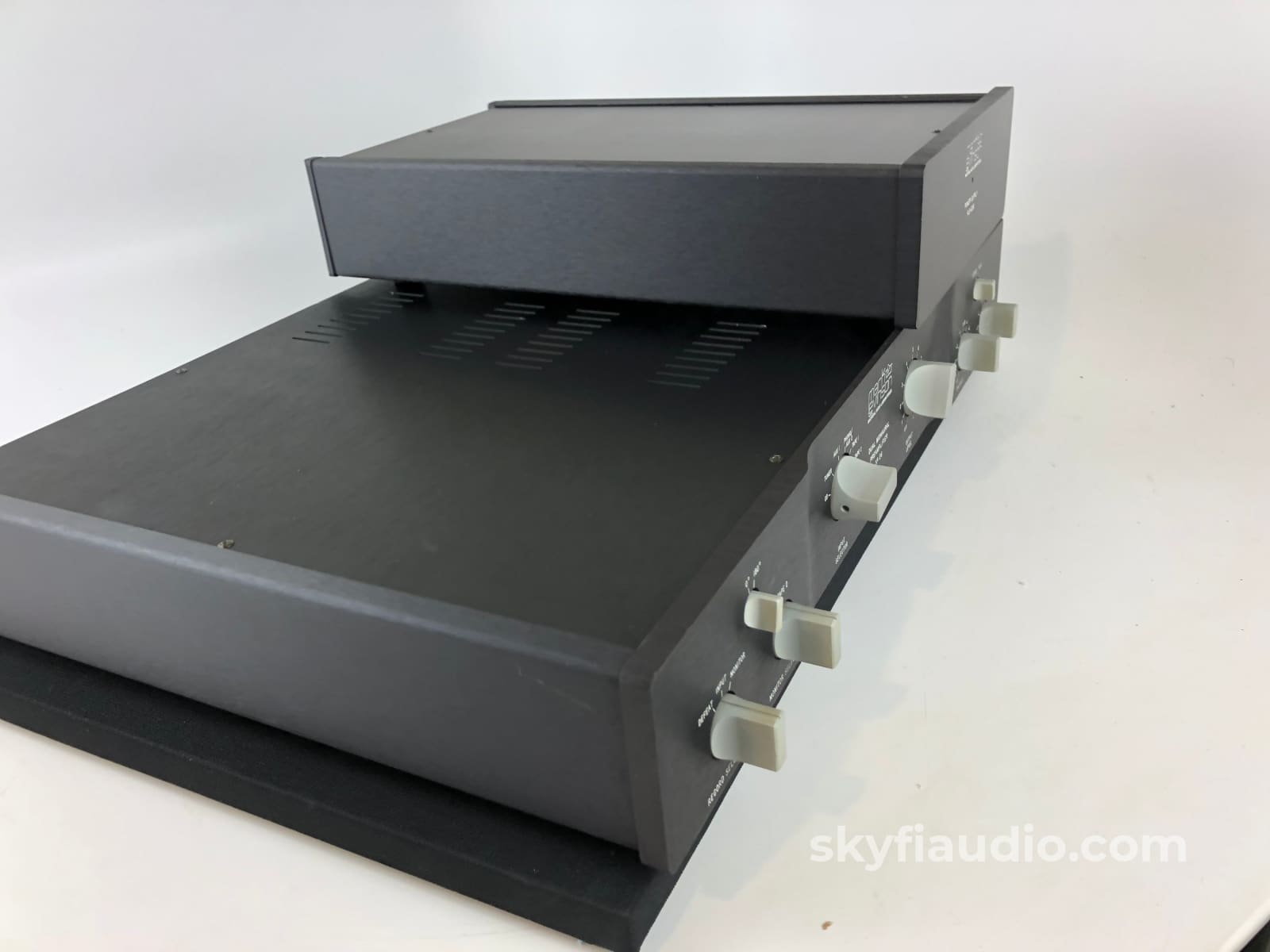
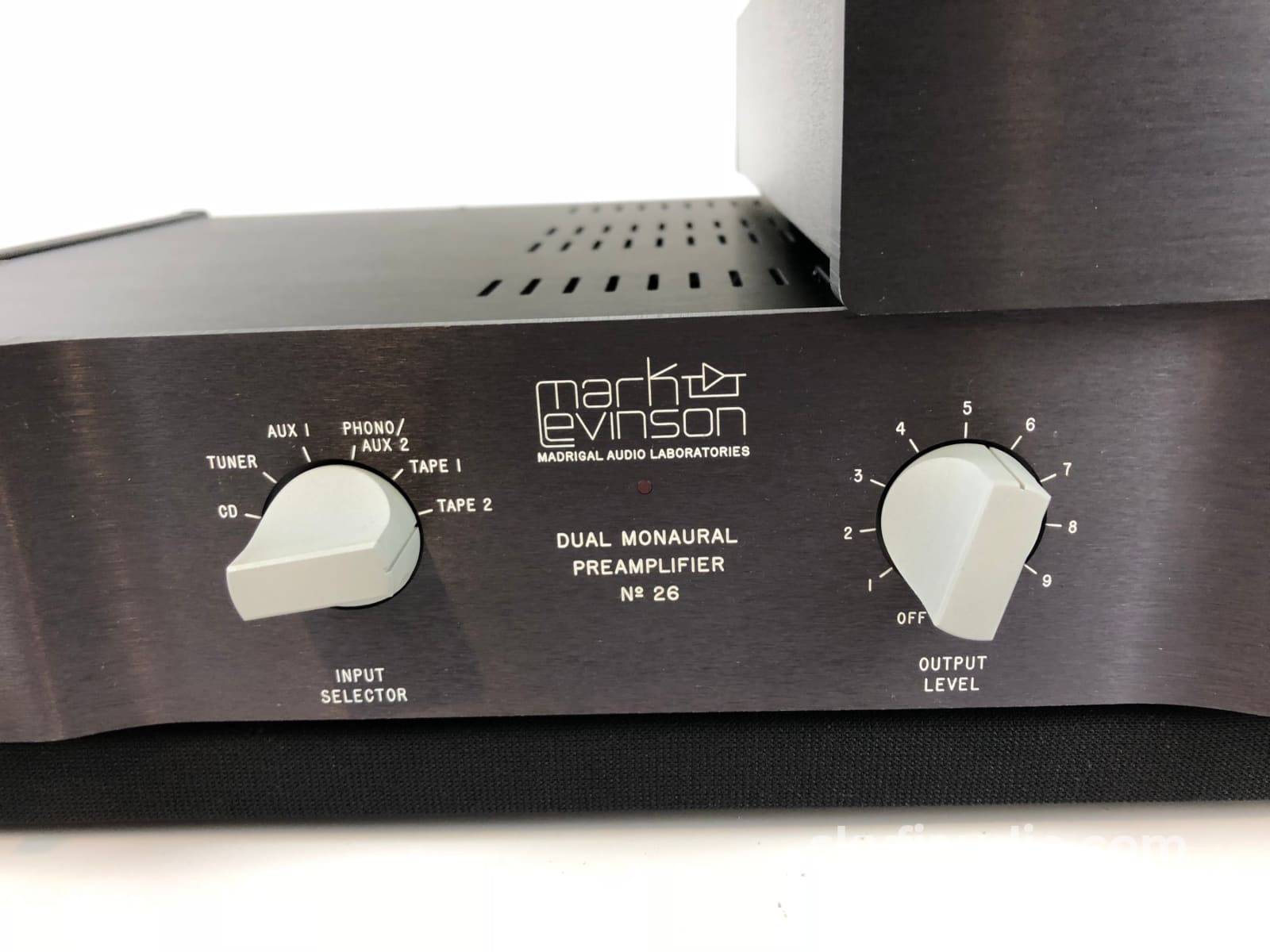
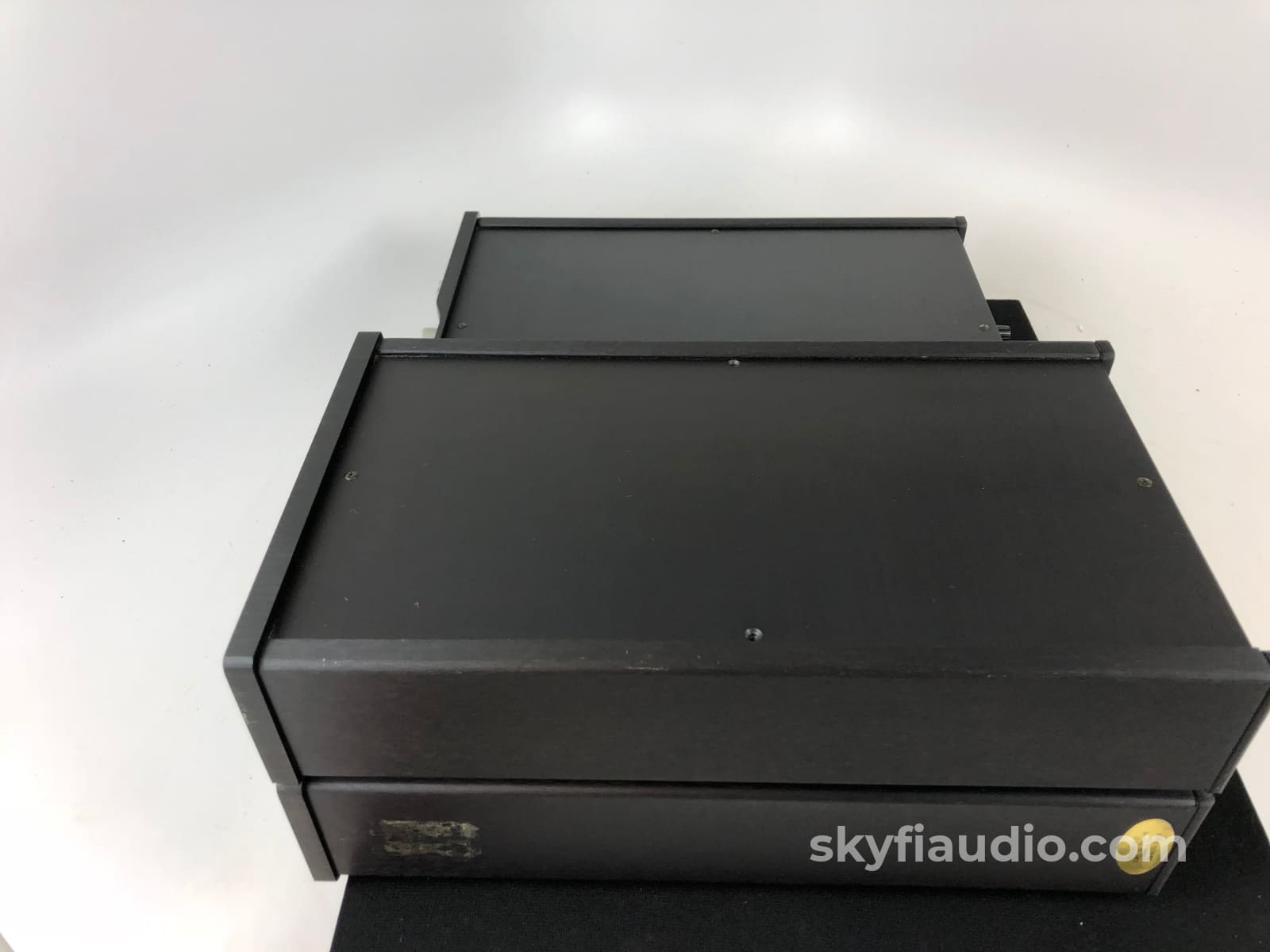
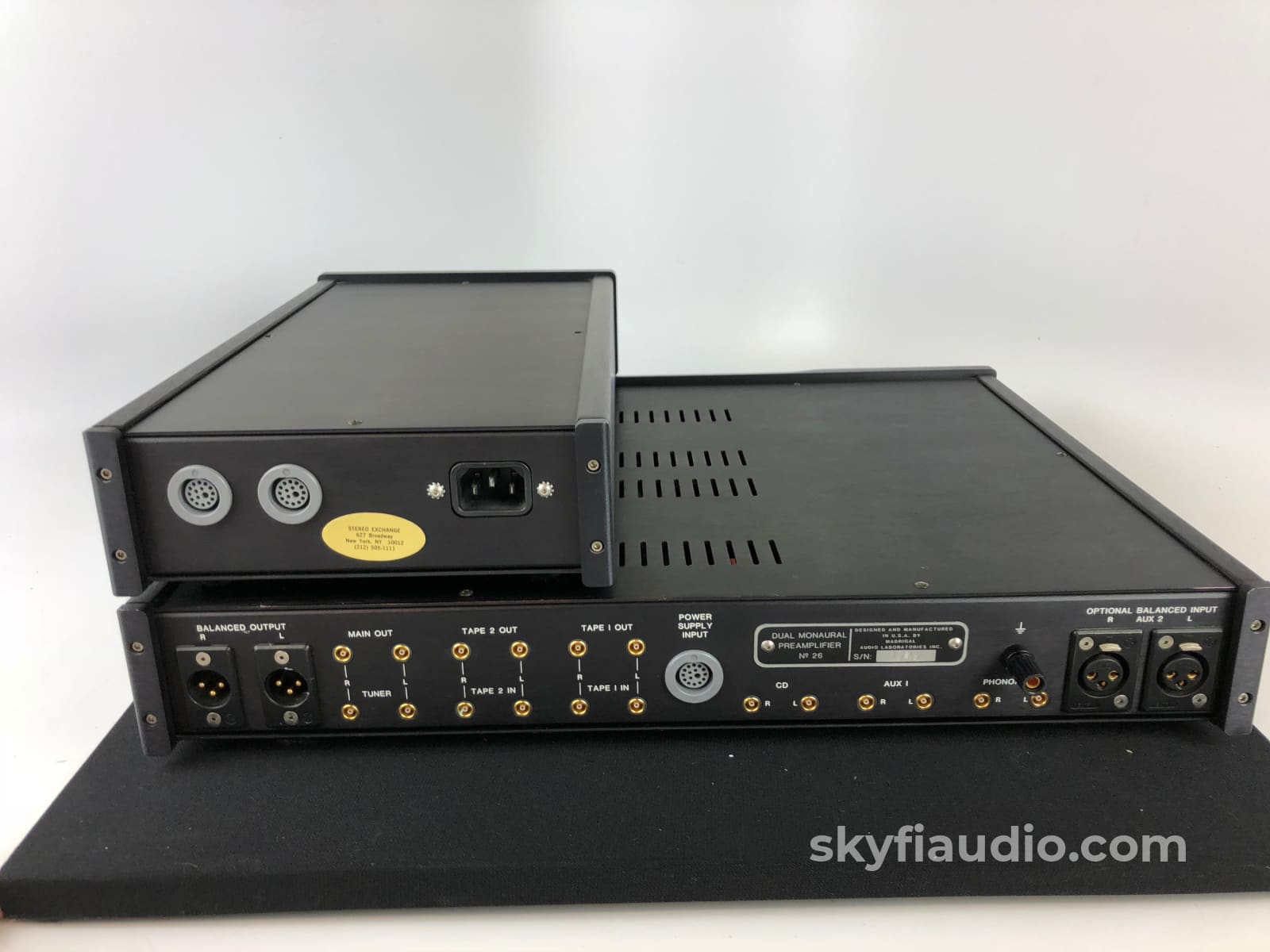
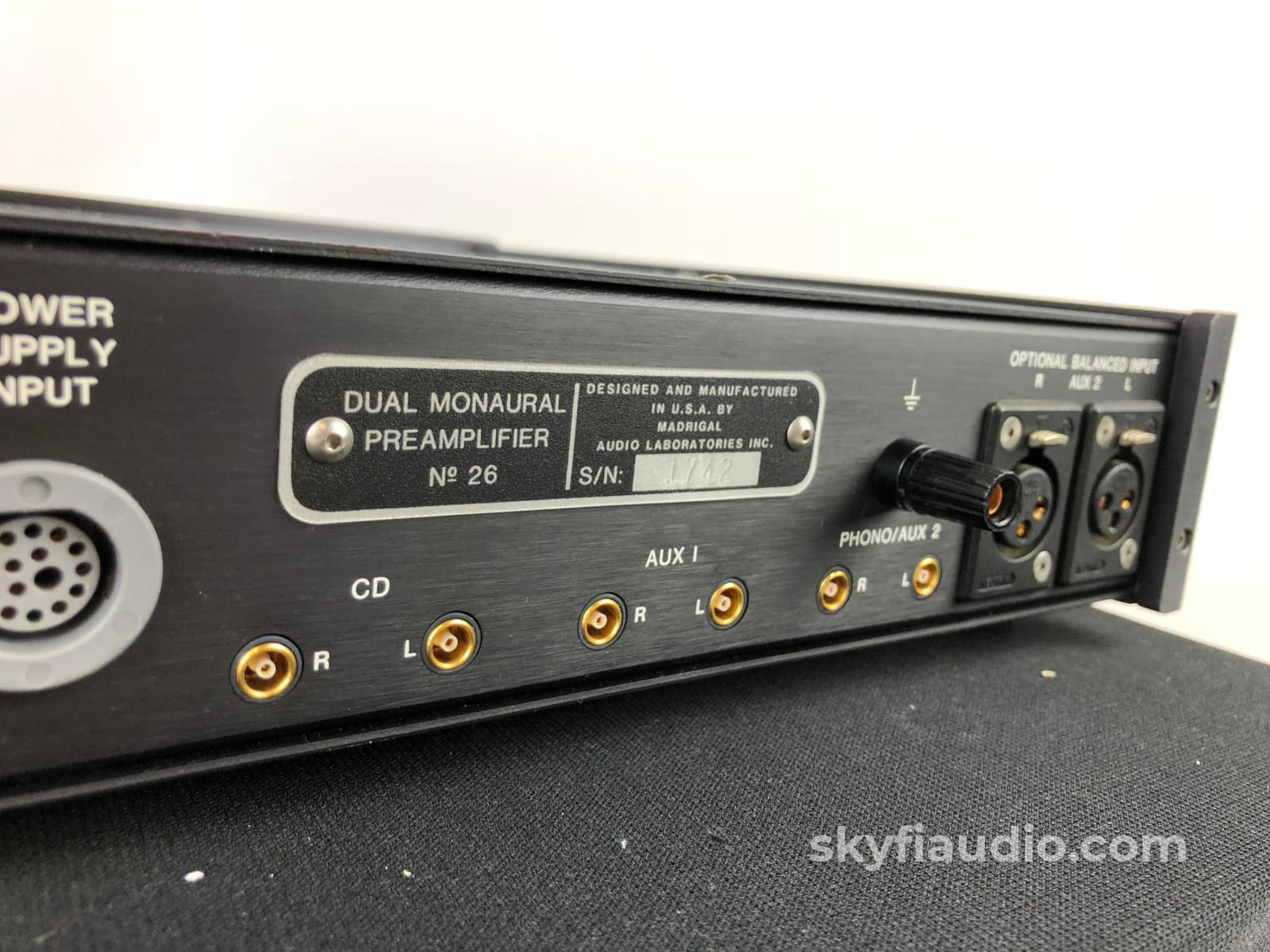

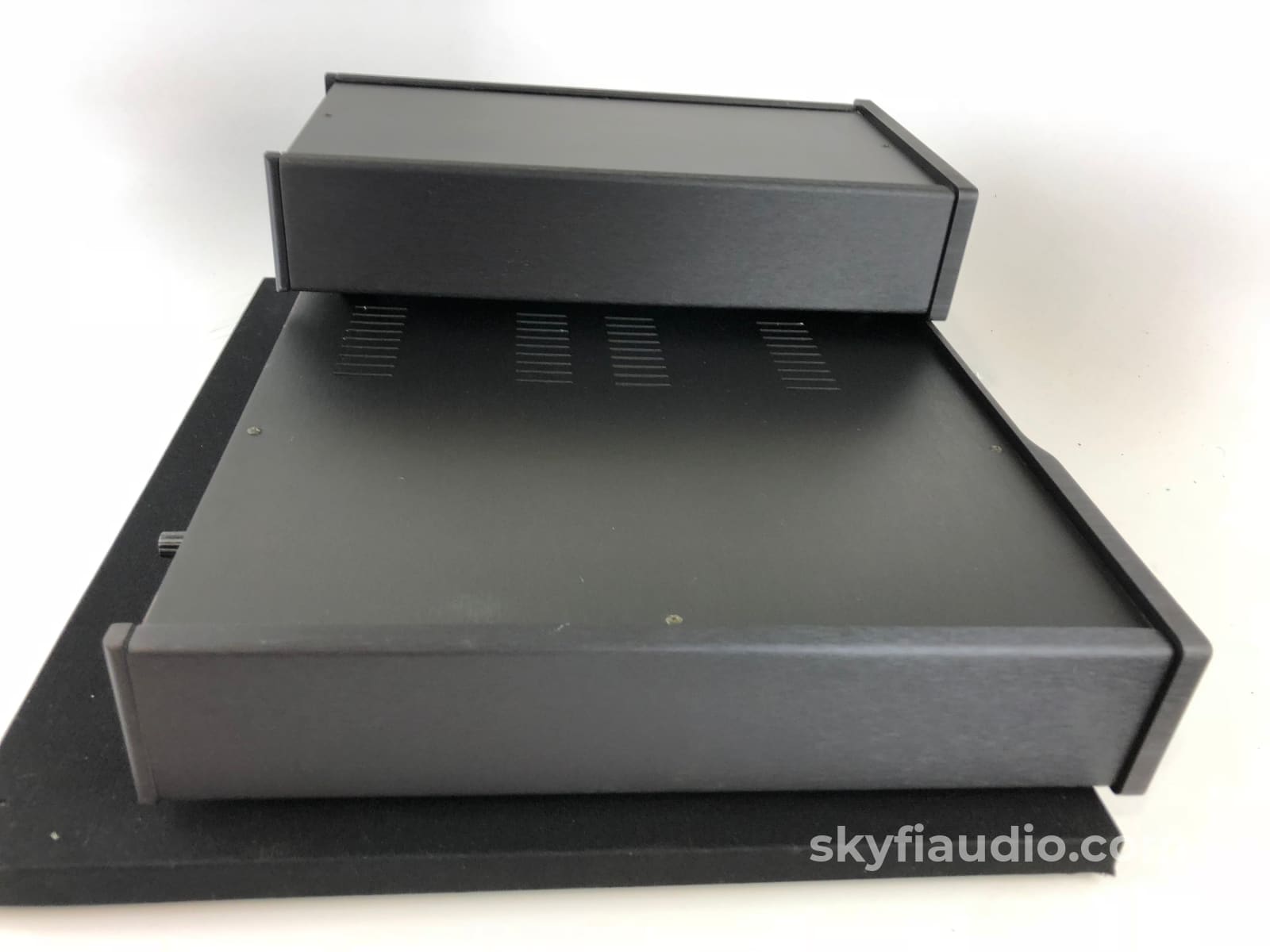
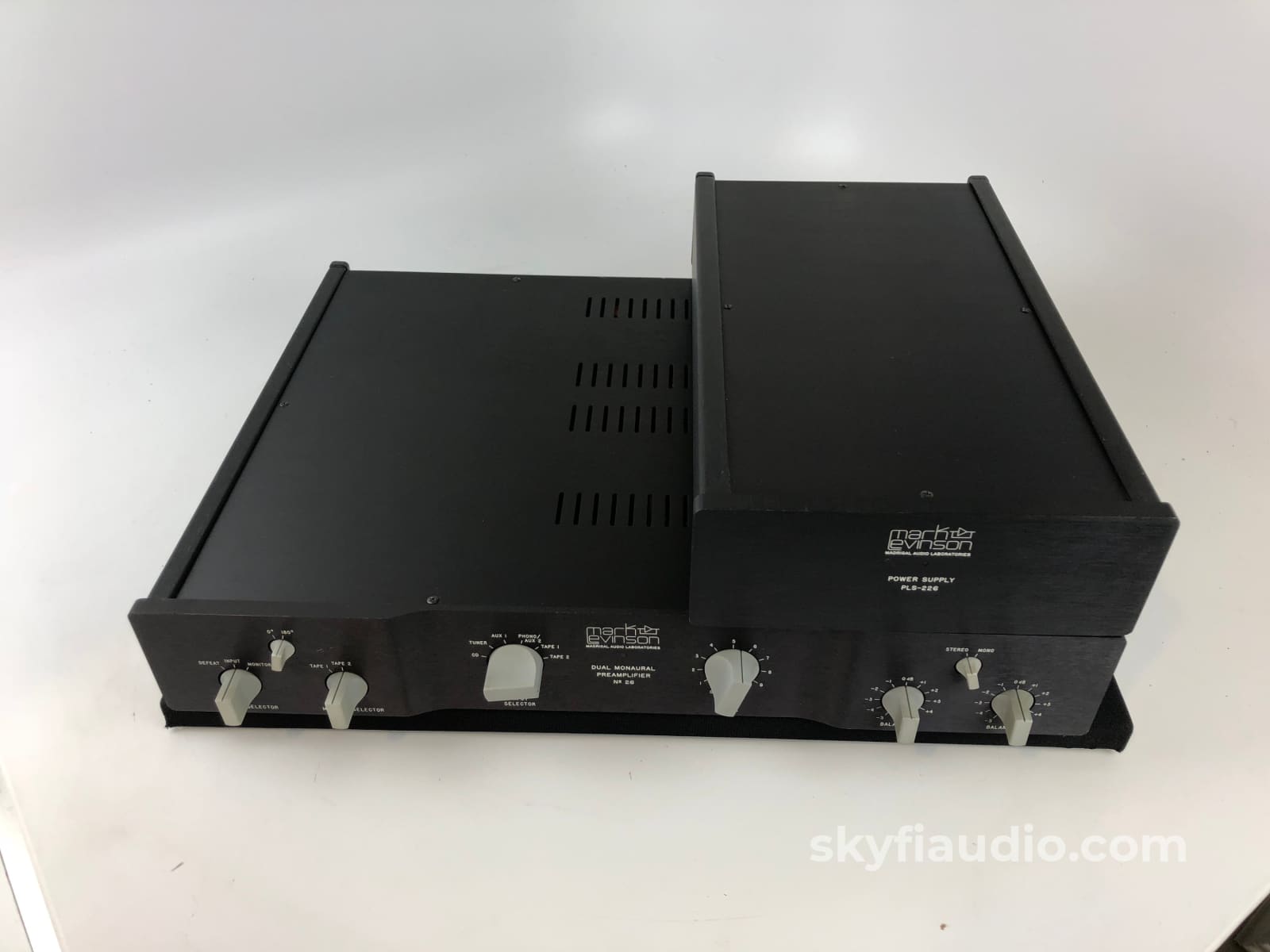
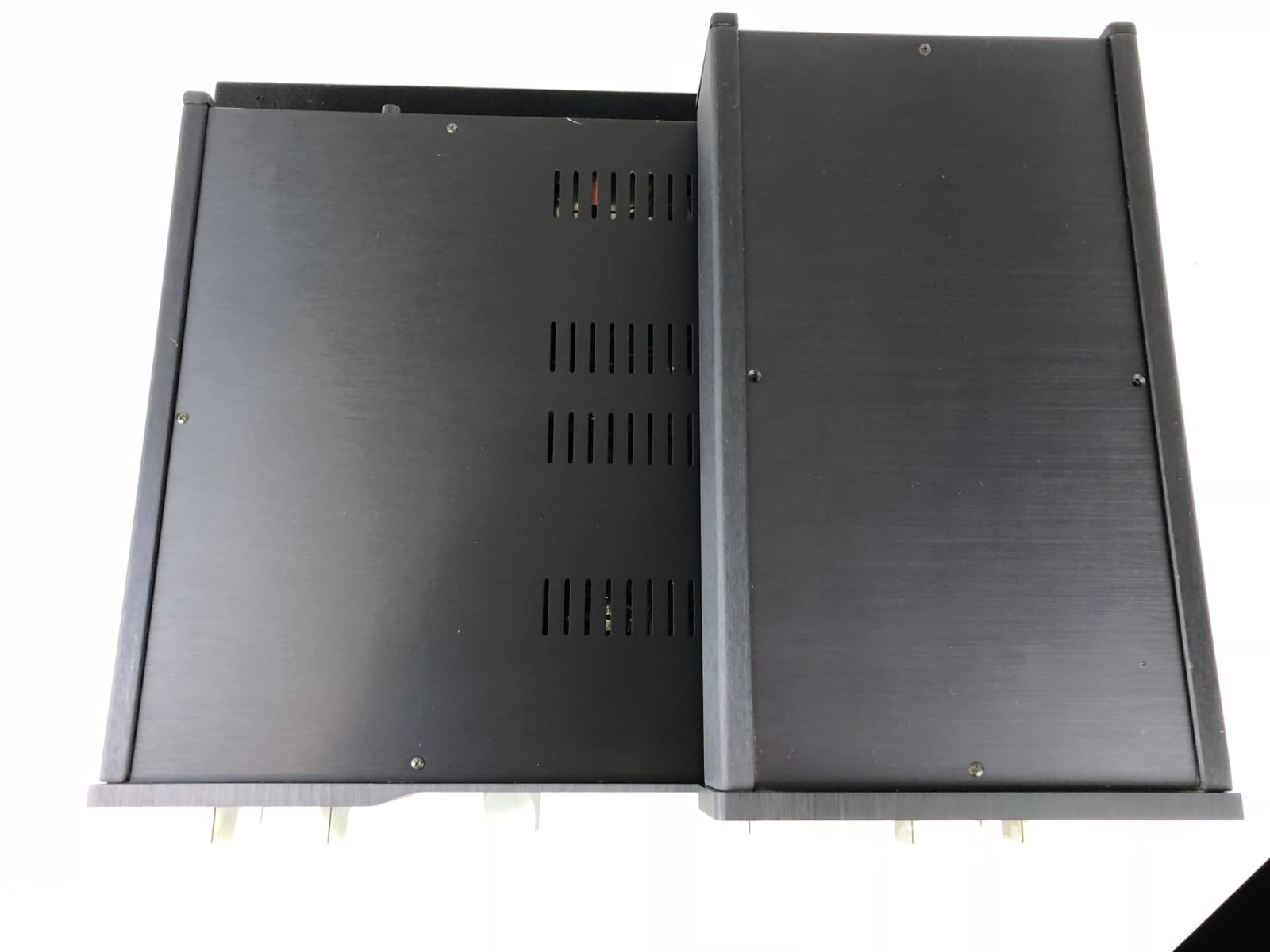
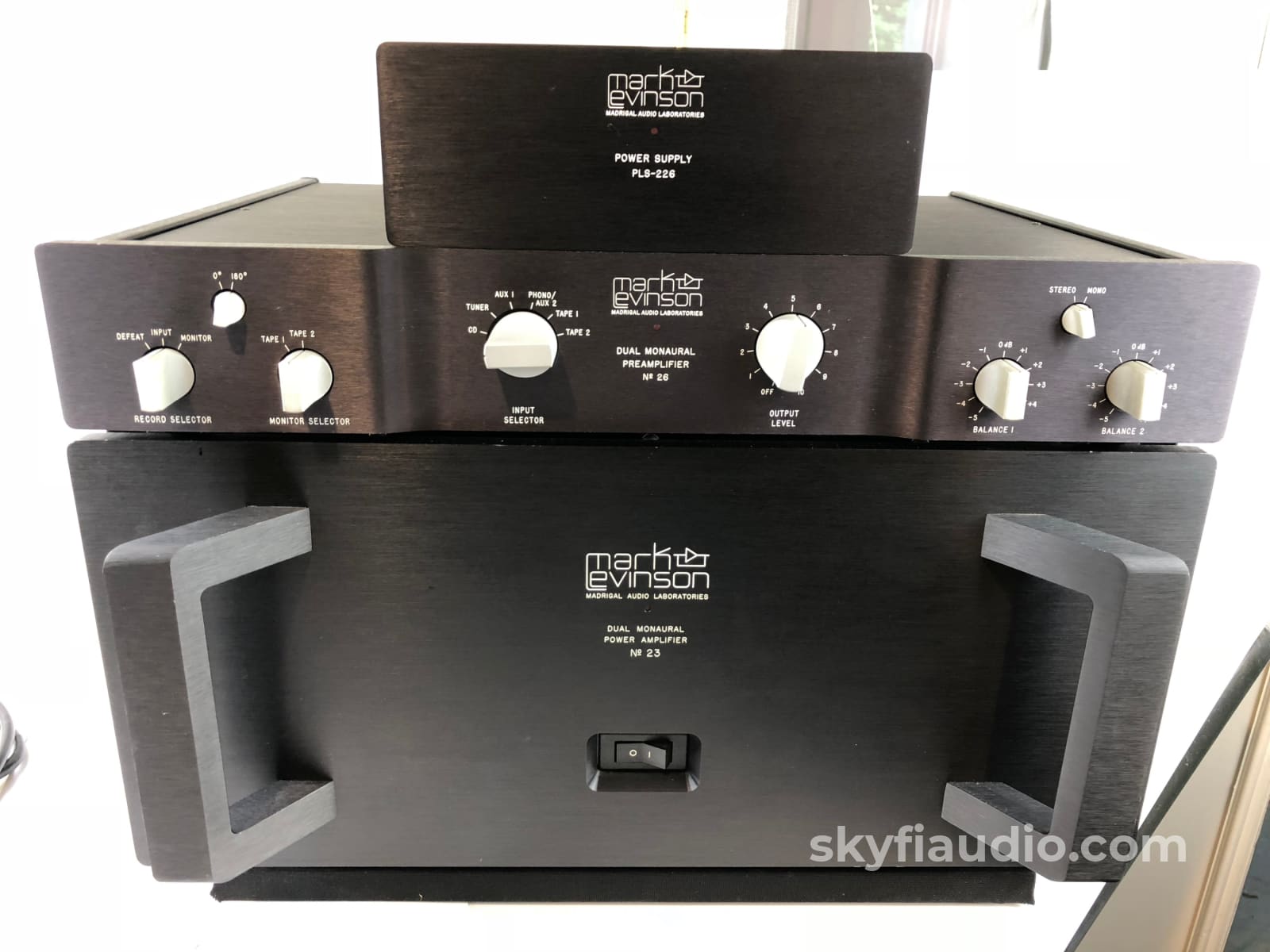
Mark Levinson No.26 Preamplifier
Free Shipping on Most Electronics - Excludes Speakers and Items Requiring Freight - Contiguous U.S. Only
Pickup currently unavailable at SkyFi 479

Mark Levinson No.26 Preamplifier
SkyFi 479
479 South Broad Street
Glen Rock NJ 07452
United States
Near perfect vintage solid state preamp from the golden era of Mark Levinson.
Made in the USA with the highest quality components available at the time. No gimmicks or unnecessary functions, just a pure perfect signal path with the right amount of gain.
The separate power supply ensures that the signal is unaffected by the typically noisy internal power supply.
This is the solid state line version, so there's no phono module. If you need phono take a look at our Audio Research PH1 for a great match.
Includes the preamp, power supply, umbilical cable, 3 sets of CAMAC to RCA adaptors, manual, and power cord.
Single owner unit that was well cared for.
Some details from a great Stereophile review:
Mark Levinson No.26
The No.26 is the first Mark Levinson preamplifier to be designed by Madrigal Audio Laboratories. Only the third wholly new component to come from ML since the company was taken over by Madrigal, the No.26 was launched at the 1988 WCES and consists of a neat, black-finished preamplifier chassis with a remote power supply, connected via a lead with 9-pin connectors on each end. The power supply must be placed away from the preamp chassis, or, if it must be next to it, to its right, away from the phono circuitry. The preamp chassis has a sculptured, black anodized, 3/8"-thick front panel, with the labeling inset in white in traditional Mark Levinson style. Milled circular counterbores recess all the knobs. The main controls, level and input select, utilize the regular ML-style flanged knobs and occupy the center of the faceplate. To their left and right are triads of smaller knobs, to control the subsidiary functions.
On the left are the two tape-loop controls, one switching between tape loop 1 and tape loop 2, the monitor switch also offering a third "defeat" position where the tape loops are completely out of circuit. An even smaller switch offers the choice between inversion and non-inversion of absolute signal polarity. The "soundstage" controls are to the right, the stereo/mono switch and balance controls, the individual level-adjust controls for each channel offering a maximum swing of ±5dB in detented 1dB steps.
On the rear panel, all inputs and outputs are implemented with unbalanced Camac sockets with gold-plated contacts. Though totally incompatible with conventional jacks, these give a locking, gas-tight connection with the ground made first. (If only Camacs, developed by the European nuclear industry for instrumentation purposes, had been adopted as the industry standard rather than the clunky RCA system!) The main disadvantage is the need to use adaptors if the No.26 is to be used with source components having RCA output sockets—as nearly all do. Madrigal supplies both female and male Camac-to-phono adaptors, the latter seeming more mechanically robust. In practice, one would expect the dealer to fit Camacs to at least the customer's turntable leads.
In addition, the No.26 provides gold-plated three-pin Neutrik XLR sockets both to deliver balanced outputs for each channel and to offer the option of a balanced input. This, Madrigal feels, is a superior method of implementing a true balanced connection to using two pairs of unbalanced RCA connections, one inverting, one non-inverting. It enables the optimum cable to be used for balanced operation, this consisting of an intimately twisted pair to give the maximum common-mode noise rejection.
"Balanced input?" The No.26 offers perhaps the widest range of input options I've seen. The appropriate position of the input-selector switch is labeled "PHONO/AUX 2." In its most basic form, the No.26 lacks any disc circuitry, this pair of Camacs offering a sixth line-level input. An increase in price of $660 gets the customer a conventional, unbalanced-input, moving-magnet module, the gain switchable between 38dB or 44dB; an extra $760 over the basic price gets an unbalanced MC module, the gain again being switchable but now between 58dB or 64dB. To come in the future will be first a balanced line-level input module, to be used with such CD players as the Accuphases and Denons that have balanced outputs or with professional tape recorders, using the XLR sockets already installed. After that, an outboard phono preamp will become available.
Input impedance for the line-level inputs is 14k ohms in parallel with 220pF. Output impedance is not stated, but the load impedance should be 600 ohms or greater. Maximum output voltage is 6V, unbalanced. The No.26 should have no problems driving long cables. The tape outputs, however, should see at least 10k.
How about the circuitry? Taking the fundamentals first, as with the Krell KRS2, another no-compromise preamplifier, there is no on/off switch, the No.26 being intended to be left on all the time. The PLS-226 power supply incorporates AC RF filtration and spike suppression and delivers two pairs of rectified and smoothed ±27V rails; these are then regulated to deliver completely separate ±17V supplies to each channel of the phono- and line-level circuits. The umbilical also supplies a completely separate supply to drive the signal-switching relays. Conventionally, either the input signals are taken via long pcb traces or ribbon cable to a preamp's front-panel input selector, or the switches have long extenders between the knob and the switch body, which is positioned at the rear, near the input sockets. The Madrigal design team felt that even the latter compromises the integrity of the signal; instead, they chose to use high-quality, hermetically sealed relays, using bifurcated, gold-plated silver contacts. The front-panel switches control just the DC relay-operating voltages.
As well as allowing a switching topology to be used which minimizes the number of contacts in the signal path (there being only two contacts between any source and the main outputs and only one between any source and either of the tape outputs), the relays can be placed adjacent to the input sockets on the rear panel, minimizing the crosstalk between inputs. These relays are said to have a lifetime in excess of 10 million operations and are also used to implement the phase-inversion and tape-monitor switching. The only front-panel controls that operate directly on the signal are, in fact, the balance and mono/stereo switches, and the volume control.
The latter is a silky-feeling Penny & Giles conductive-plastic component, with interchannel tracking specced at better than 0.5dB, even at maximum attenuation. (Ben Duncan, having investigated the possibility of using a similar pot in his passive preamp design, (footnote 3) informs me that this is a very expensive component.) The gain of the line-level stage can also be set internally via DIP switches at 6, 12, or 18dB via the unbalanced Camac outputs. (The balanced XLRs offer an additional 6dB gain due to the fact that twice the peak voltage exists between the "hot" and "cold" signal lines as exists between either one and ground.) Taken in conjunction with the adjustable gain of the phono stage and the range of the balance controls, the No.26's gain structure can be configured to give the best balance between sensitivity and noise for any source and loudspeaker.
Nearly all the circuitry is carried on one large double-sided pcb occupying the entire internal area, the exceptions being: the output switching plus the absolute-phase inversion switching, both contained on a shallow double-sided pcb running the length of the back panel; and the phono circuitry, carried on an approximately 9" x 4.5" double-sided pcb piggybacked over the mother pcb's left-hand side, and connected to it by soldered connections using flat, insulated, solid-core ribbon conductors. Factory-set to an input impedance of 1nF in parallel with 825 ohms (MC), or 47k in parallel with 100pF (MM), the phono boards carry DIP switches offering 30, 100, 825, and 10k options (MC), or 825, 10k, 22k, and 47k options (MM), in addition to a user-defined setting in which resistors and capacitors can be plugged into gold-plated circuit-board jacks. A quick check of the RIAA EQ revealed any error to be below that of my inverse-RIAA network. This phono amp is flat! The response also extends well into the infrasonic region, implying that any turntable/arm/cartridge to be used with the No.26 will have to be of at least Linn standard, if very-low-frequency problems are not to be faithfully passed on to the power amp and speakers.
Those familiar with earlier Mark Levinson electronics, where elaborate heatsinking was used on the various modules to ensure that the transistors accurately tracked one another thermally, will find the No.26's interior a surprise. The circuits have been designed not to need the mechanical thermal coupling previously used, resulting in a cleaner-looking layout. Despite the pcb commonality, construction is totally dual-mono, the regulated power supplies being separate for each channel, the board layout also keeping the channels separate—LH channel to the front, RH to the rear. High-quality parts are used throughout: Roderstein, WIMA, and RIFA polypropylene-dielectric capacitors; close-tolerance, metal-film resistors; and all transistors and end-mounted resistors and diodes are supported by plastic cradles. Add in a labor-intensive quality-control procedure, where every stuffed pcb is checked visually before even being powered up, and the No.26's performance should remain consistent over many years of service.
No.26: Dual monaural preamplifier with remote power supply. As supplied: one MC phono input with adjustable gain and loading; five line-level inputs. (Can be supplied with six line-level inputs, one of which can optionally be balanced; phono input can also be supplied in MM/low-gain form.) Input impedance: see text. THD: less than 0.005%. IMD: less than 0.005%. RIAA accuracy: <0.2dB. Maximum output: greater than 13V (balanced).
Dimensions: (preamplifier chassis): 17.5" (445mm) W x 3" (76mm) H x 13.375" (340mm) D (add 3" for connecting plugs). Dimensions (power supply): 7.625" (194mm) W x 3" (76mm) H x 13.125" (340mm) D (add 3" for connecting plug). Weight: 30 lbs.
Price: $3990 (no phono module); $4650 (with MM module); $4750 (with MC module). Approximate number of dealers: 54.
Manufacturer: Madrigal Audio Laboratories Inc., PO Box 781, Middletown, CT 06457. Tel: (860) 346-0896. Fax: (860) 346-1540. Web: www.madrigal.com .
Read more here: https://www.stereophile.com/content/mark-levinson-no26-preamplifier-no20-monoblock-power-amplifier-specifications
|
Item |
Included |
|
Original Box |
No |
|
Manual |
Yes |
|
Remote |
No |
|
Cables |
Yes |
|
Physical Condition |
9 |
|
Working Condition |
10 |
Choose options















